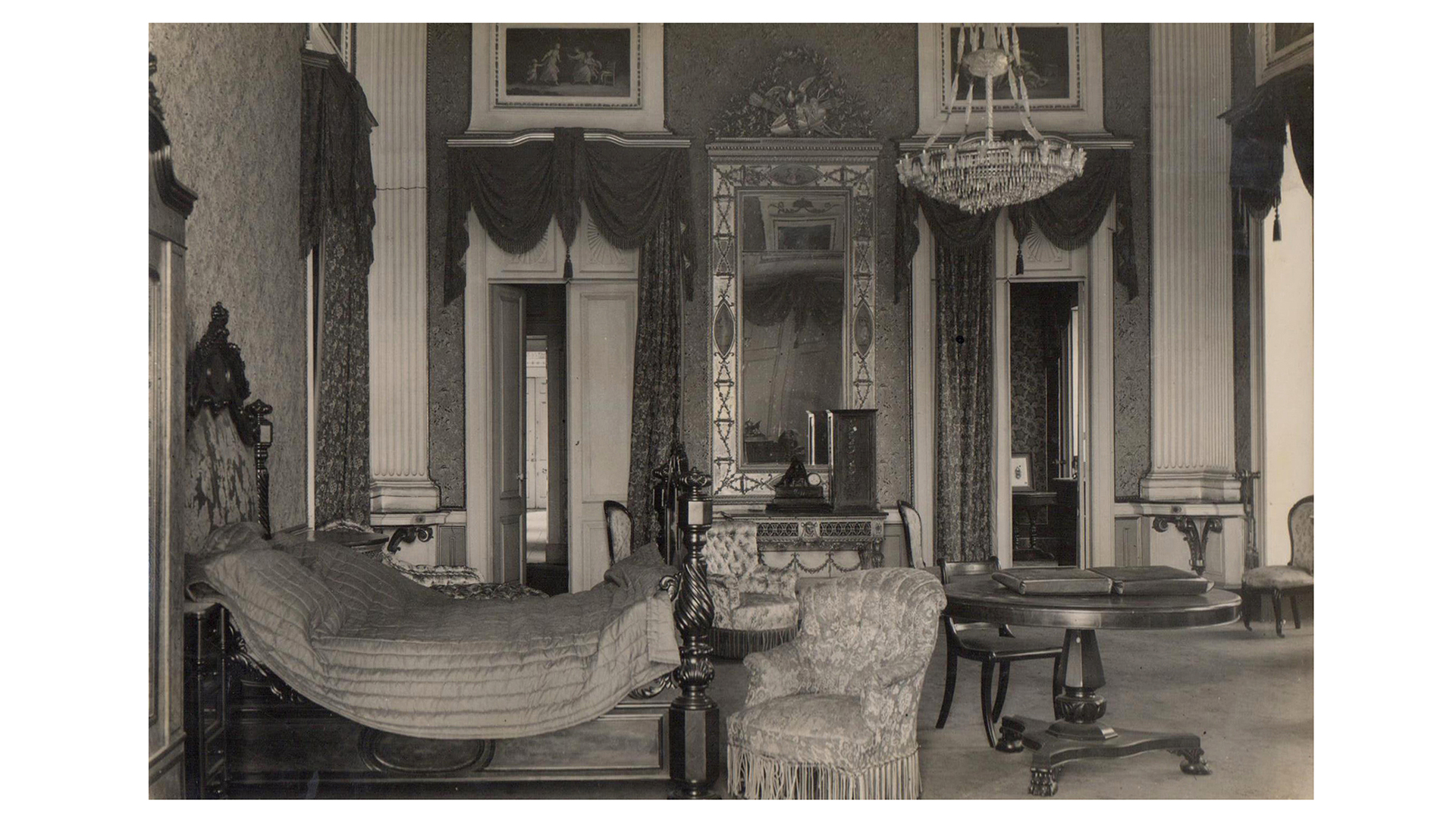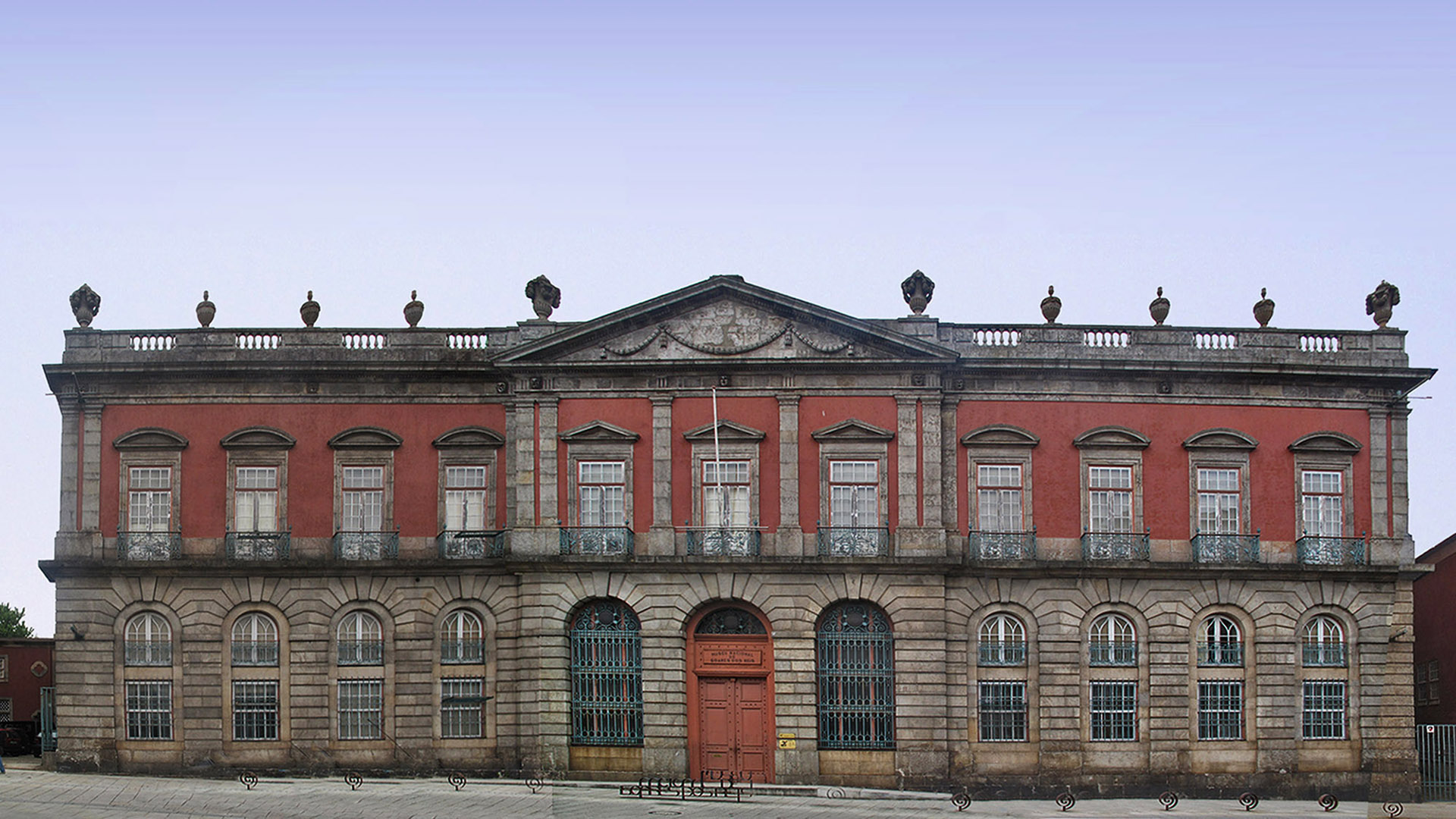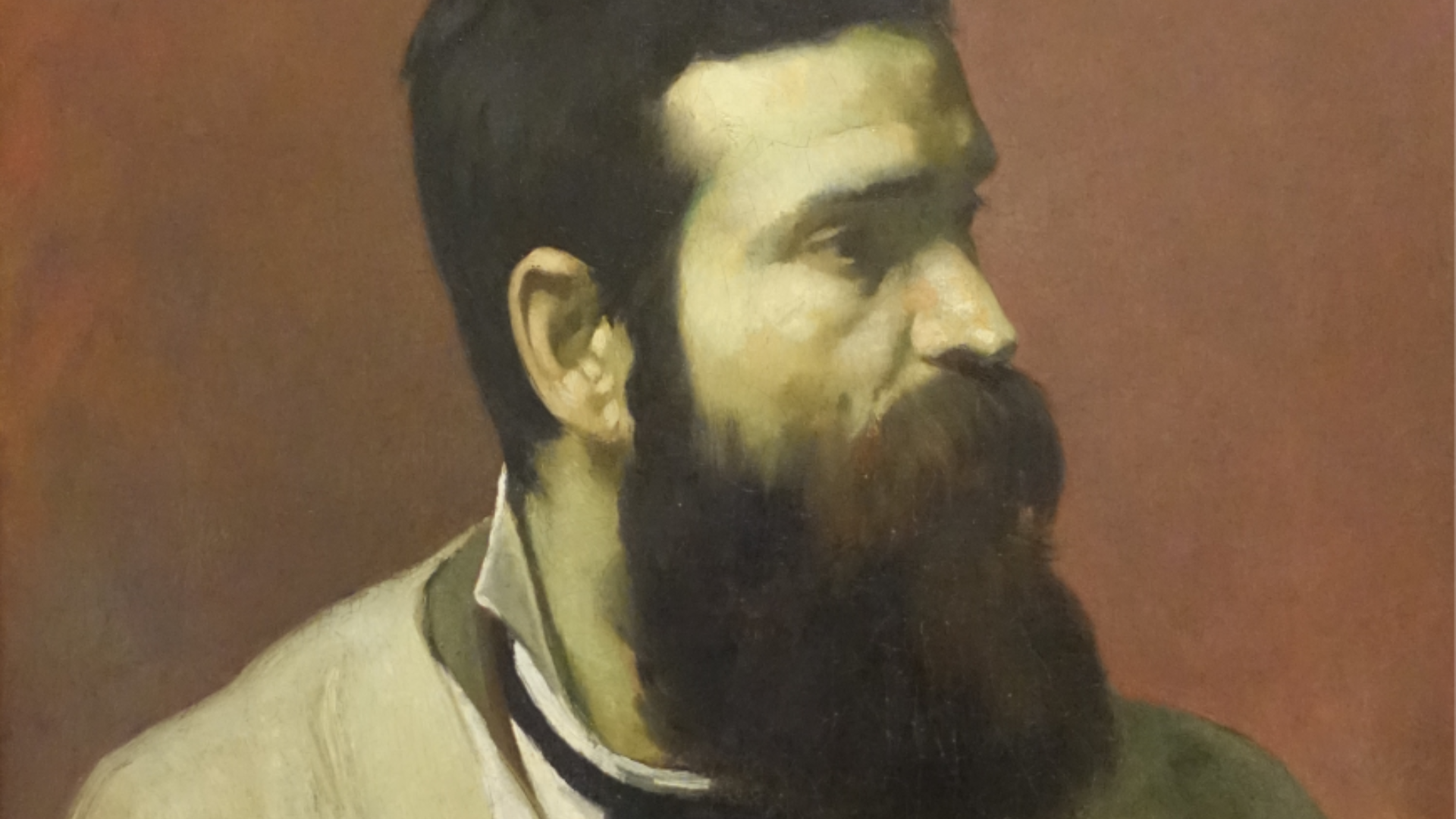History
Origins

Detail of the interior of the main floor of the Palácio dos Carrancas
The Soares dos Reis National Museum has its origins in the Museum of Paintings and Prints and other Fine Arts objects, created in 1833 by Pedro IV of Portugal, the first Emperor of Brazil, to safeguard the assets sequestered from the absolutists and convents abandoned during the civil war (1832-34). With the extinction of the religious orders, works were collected, among others, from the monasteries of Tibães and Santa Cruz de Coimbra. Known as the Museu Portuense, it was housed in the now-defunct Convent of Santo António da Cidade, in Praça de S. Lázaro, and was formalised by decree in 1836 by Queen Maria II.
In 1839, it came under the administration of the board of the Porto Academy of Fine Arts, which promoted a series of exhibitions where notable artists and successive generations of masters and disciples, such as Soares dos Reis, Silva Porto, Marques de Oliveira and Henrique Pousão won prizes.
With the proclamation of the Republic, it was renamed the Soares dos Reis Museum in memory of one of the most outstanding names in Portuguese art. In 1932, it was elevated to the category of National Museum, a period marked by Vasco Valente’s significant reorganisation, through the incorporation of objects from the Episcopal Palace of Porto and the Industrial Museum, as well as the deposit of the collections from the now extinct Museu Municipal.
As part of the National Commemorations of 1940, the Soares dos Reis National Museum was installed in the Carrancas Palace with an exhibition dedicated to Soares dos Reis.
In the 1950s, the Museum opened up to new contemporary artistic expressions, a line of thought which, after 25th April 1974, continued at the Contemporary Art Centre (CAC), the starting point for the National Museum of Modern Art, today known as the Serralves Foundation.
The administration of the Portuguese Institute of Museums marked the remodelling of the Soares dos Reis National Museum in 2001 with projects by Fernando Távora endowing it with new spaces for reserves, temporary exhibitions, an auditorium and an educational service.
History
Building

Facade of the Soares dos Reis National Museum
The Carrancas Palace was built in 1795 by the Morais e Castro family, descendants of New Christians who belonged to the Porto bourgeoisie and who became rich from the Gold and Silver Yarn Factory that was set up here. The building, with its factory and residence, witnessed and was the scene of social, military and political events throughout the 19th century.
Markedly urban and in keeping with the Neoclassical style that was taking hold in Porto at the time, the Palace had a unique character in the context of private construction. Everything points to the intervention of municipal architects Joaquim da Costa Lima Sampaio and José Francisco de Paiva. The façade, with its clear design, divided the building into two horizontal bodies. The distribution followed the hierarchy of the old regime and architectural treatises: a noble floor, an enclosed courtyard with a high wall, separation of manufacturing and labourers, and the farmhouse set back. Luxury was evident in the interior spaces, particularly on the main floor, with a grandiose Dining Room and Music Room still standing from that period.
The building’s grandeur made it the setting for major political and military events in the city. When occupied during the Peninsular War, it was considered a strategic location and occupied by Marshal Soult. Shortly afterwards, his successor in military command of the city and head of the liberating army, General Arthur Wellesley (later to become the Duke of Wellington) set up his headquarters.
In another military conflict, the Siege of Porto (1832-1833), the Morais e Castro family welcomed the soldier king, Pedro IV, who governed the country from there until an artillery threat forced him to move elsewhere.
Steady financial decline and an ineffectual struggle to regain the lost privileges of the old factory led the owner, Carlota Rita Morais e Castro, Baroness of Nevogilde, to put the palace up for sale. It was eventually bought by King Pedro V and, from 1862, a new page in the history of the building and the city was opened, with the royal family living in the Royal Palace of Porto. Celebratory moments brought the royal family to the city and the palace functioned as the constitutional monarchs’ representative institutional space and residence.
The palace also opened its doors as a recreational space, with the inauguration of the Maria Amélia Velodrome, in 1894, on the grounds of the former farm. Spacious grounds welcomed new sports that were expanding among the city’s elite, with a track for velocipedes, the space’s great attraction, and two lawn tennis courts in the centre.
In 1932, with the death of Manuel II, the last king of Portugal, the building was donated in his will to the charitable institution, Santa Casa da Misericórdia do Porto. At the same time, the State showed interest in safeguarding and using the building for cultural purposes. The long-sought solution to house the Soares dos Reis National Museum had been found. By agreement with the Santa Casa da Misericórdia do Porto, the building was made State Patrimony in 1937. In keeping with the Museology of the time, the building’s architectural qualities and history made it ideal for adaptation to its new function.
History
Patron of the Museum – Soares dos Reis

Portrait of Soares dos Reis by João Marques da Silva Oliveira, 1881
In 1911, through the Republic’s institutional reforms, the Museum took the name of Soares dos Reis in tribute to that academician from the Portuense Academy of Fine Arts, who was one of the most represented artists in the collections.
In the course of the exhibition, the work of António Soares dos Reis (1847-1889) occupies a central place in the museum, with his academic works, portraits, as well as allegorical and monumental pieces on display. His final test as a scholarship student abroad was O Desterrado (The Exiled), a nostalgic work, made in Rome in 1872, which made his reputation.
Among his statuary pieces, the Conde de Ferreira (the Count of Ferreira) made in marble from the Agramonte Cemetery in Porto, is likewise outstanding. The iconic bust, Flor Agreste (Wild Flower) and the Filha dos Condes de Almedina (Daughter of the Counts of Almedina) are from a phase in which Soares dos Reis achieved great prominence teaching at the Porto Academy of Fine Arts. His portrait work features personalities from the Porto upper bourgeoisie, such as the bust of Joaquim Pinto Leite and the Viscountess of Moser. Busto da Inglesa, Mrs Leech (Bust of the English Woman, Mrs Leech), and the plaster of Fontes Pereira de Melo are also in the gallery.
The influence of Soares dos Reis on the artists trained at the Porto School of Fine Arts is clear in the work of his disciples, António Teixeira Lopes (1866-1942) (with Infância de Caim, or Cain’s Childhood) and Augusto Santo (1868-1907) with his bronze, Ismael (Ishmael).
